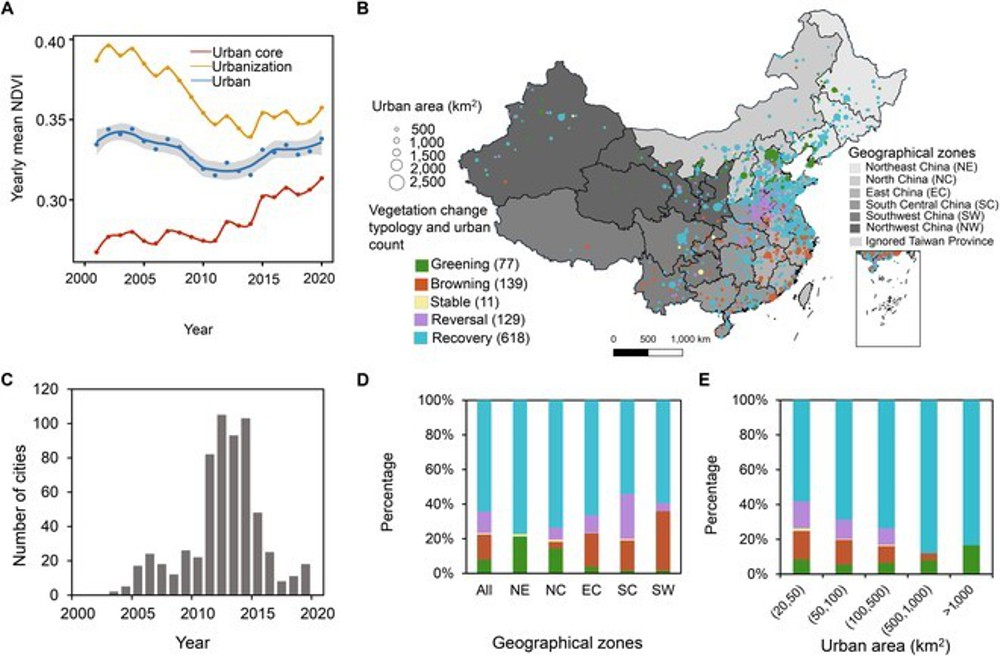How City Parks in China are Winning the Battle Against Concrete
In the face of rapid urbanization, China has embarked on an impressive journey of urban greening, transforming the environmental narrative from degradation to sustainability.
The collaboration between the University of Copenhagen and the Chinese Academy of Sciences has yielded ground-breaking insights through satellite analysis of the evolution of greenness in over 974 cities from 2000 to 2020.
This strategic pivot towards revitalizing urban ecosystems is meticulously documented in a new review published in the Journal of Remote Sensing on February 8, 2024, marking a significant stride in sustainable urban development.
This study delves into the evolving landscape of Chinese cities, showcasing an optimistic trend where the greening of urban cores effectively counters the loss of vegetation due to sprawling urban expansion.

By harnessing advanced satellite imagery analysis, researchers meticulously tracked changes in urban vegetation across China from 2000 to 2020. They developed a novel classification system to distinguish between areas of greening, browning, stability, reversal, and recovery.
The findings reveal a pivotal shift post-2011, with over 60% of the cities demonstrating substantial recovery of greenness.
This outcome reflects the positive impact of China’s rigorous urban greening policies, which will contribute to enhancing biodiversity, improving air quality, and elevating the quality of life for city dwellers. This research not only highlights the resilience of urban ecosystems but also illustrates the tangible benefits of integrating green spaces into urban planning.
Dr. Xiaoxin Zhang, the lead author, states: “Our findings provide a hopeful perspective on how urban planning and greening initiatives can effectively balance urban expansion with environmental sustainability. It’s a testament to China’s commitment to building greener, more liveable cities.”
By conducting a thorough analysis, the study illuminates the complex interactions within our planet’s carbon cycle in response to environmental challenges. This provides essential knowledge for advancing climate science and devising effective management approaches.




















